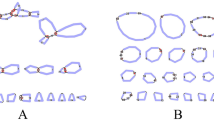Abstract
A molecular phylogeny of Larix comprising 12 species was constructed from the sequence analysis of the paternally inherited cpDNA trnT-trnF region of 46 individuals. The most parsimonious tree split Larix into three sister clades: one clade was composed of two North American species, the other two were short-bracted and long-bracted species of Eurasia respectively except that L. sibirica was clustered in the long-bracted clade. The difference between the present cpDNA phylogeny and previous nrDNA ITS phylogeny in the position of L. sibirica seems to suggest that ancient cytoplasmic gene flow might exist between sections Larix and Multiserialis. The short-bracted L. laricina and long-bracted L. occidentalis have an identical sequence of the trnT-trnF region, which implies that the bract length divergence among North American larches might have occurred recently or chloroplast capture happened during the early differentiation of the two species. The cpDNA results also shed some light on the biogeography of Larix.
Similar content being viewed by others
Author information
Authors and Affiliations
Corresponding author
Rights and permissions
About this article
Cite this article
Wei, XX., Wang, XQ. Phylogenetic split of Larix: evidence from paternally inherited cpDNA trnT-trnF region. Plant Syst. Evol. 239, 67–77 (2003). https://doi.org/10.1007/s00606-002-0264-3
Received:
Published:
Issue Date:
DOI: https://doi.org/10.1007/s00606-002-0264-3




